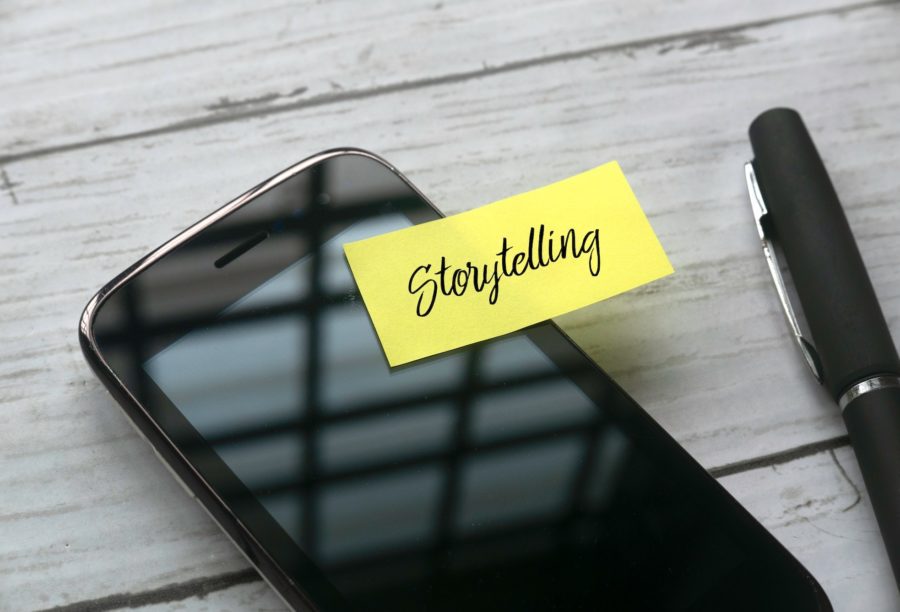
Estimated reading time: 9 minutes
In today’s article, we will discuss Storytelling In Social Media Branding and how it can help you.
Have you ever scrolled through your social media feed and found yourself captivated by a brand’s story? Maybe it was a heartwarming tale of how the company came to be or a humorous behind-the-scenes look at the team’s day-to-day. Whatever the story was, it left an impression on you and made you feel more connected to the brand.
This is the power of storytelling in social media branding. By crafting a compelling narrative, brands can capture their audience’s attention, foster an emotional connection, and ultimately drive sales.
Related Links
But how can your brand also leverage the power of social media storytelling? In this comprehensive guide, we’ll explore the role of storytelling in social media branding. We’ll also explain how to craft your brand story, tell it on social media, measure success, and provide examples of successful social media storytelling.
So, let’s get started.
Understanding The Role Of Storytelling In Social Media Branding
The graph below illustrates the reasons why consumers follow social media influencers. The survey, carried out by Statista in 2022, revealed that online storytelling was the second most important reason, right after the content.

These figures cannot be ignored. Social media storytelling has become an increasingly important aspect of branding.
By crafting a compelling story, creators and businesses can connect with their audience on a deeper level and build a stronger brand identity. A good story has the power to engage and emotionally connect with customers, which can lead to increased loyalty and higher sales.
To create a successful storytelling strategy, you must identify your brand’s unique story and communicate it effectively across social media channels. This involves understanding the values, beliefs, and goals of the company and how they align with the needs and desires of your target audience.
Crafting Your Brand Story
Once you have a solid grasp of social media storytelling, it’s time to start developing your brand’s story. Your story should be distinctive, enduring, and emotionally impactful while expressing the personality, mission, and values of your company.
Establishing your business’s key principles and what makes you different from your rivals is the first step in creating your brand story. Think about the history of your brand, what motivated you to launch your company, and how you have changed through the years. Consider the difficulties you have faced and the accomplishments you have made.
Internet resources are now crucial for businesses trying to produce interesting social media content. A graphic design tool can help you with creating captivating graphics that can make your social posts stand out. Your social media posts and captions can be well-written and error-free with the aid of a content generator.
Moreover, an AI tool, like Ask Writer, can create accurate and up-to-date content for different types of content for free. You can use the smart tool to create social media posts, blog posts, meta descriptions, product descriptions, sales emails, and much more. Here’s a preview of the tool in action:

The key to effective storytelling in social media branding is to build a solid brand story. You may establish a more personal connection with your audience by crafting a story that is true, memorable, and emotionally impactful.
Telling Your Brand Story On Social Media
The next step in social media storytelling is telling your brand story. Social networks provide a unique opportunity to share your brand story through a variety of formats, including photos, videos, and written content.
To tell your brand story effectively on social media, you need to consider the unique characteristics of each platform and tailor your content accordingly. For example, Instagram is a highly visual platform, so your Instagram followers expect to see eye-catching images and engaging videos. On the other hand, Twitter is more text-based, so crafting compelling headlines and messages is key to capturing your audience’s interest.
Find out where your target audience hangs out most of the time. For some groups of people and industries, it might be Twitter, for other ones it could be Pinterest or YouTube.
Creating a buyer persona can help to come up with effective social media content that resonates with your target audience. To create a buyer persona, start by analyzing your company’s customer data to identify common characteristics among the most profitable customers. This can include factors like:
- Demographics
- Job Titles
- Lifestyles
- Interests
- Values
- Purchase Behavior
Conducting surveys and interviews can help to gain further insights into your target audience’s pain points and motivations. Once your buyer persona has been created, you’ll have a better understanding of who you are talking to. You can start telling your brand’s story in the way and through channels that resonate with your target audience.
Measuring The Success Of Your Storytelling In Social Media Branding
Understanding the effects of your efforts and adjusting your approach depends on measuring the performance of your social media branding campaign. Start by establishing precise targets and measurements that support your business goals. This can involve conversion rates, follower expansion, website traffic, or revenue.
Use social media analytics tools to keep tabs on your results and development. These instruments can offer perceptions into important parameters including reach, engagement, and conversion rates.
You can use Instagram Insights to learn your audience’s location, gender, age range, and when your audience is most active on the platform:

Use this data to identify which types of content and storytelling strategies inspire your audience and adjust your approach accordingly.
Social media analytics tools like Hootsuite, Sprout Social, and Buffer can help you track engagement metrics such as likes, shares, comments, and clicks. Additionally, tools like BuzzSumo and Brandwatch can help you monitor brand mentions and sentiment on social media. This can give you valuable insights into how your brand is perceived online.
Examples Of Successful Storytelling In Social Media Branding
Effective social storytelling can have a significant impact on your business’ success. Here are some examples of businesses that have successfully used storytelling in their social media branding strategies:
Airbnb
Airbnb uses storytelling to showcase the unique experiences and destinations available through its platform. The brand’s Instagram and Twitter accounts feature stunning photos and videos of properties around the world. These are paired with personal stories from guests and hosts who have used their service.
Here’s a tweet that Airbnb released to celebrate reaching one of its targets–working with 1 million Superhosts.

By highlighting the human connection and shared experiences of travel, Airbnb has built a loyal following of customers who value adventure and exploration.
Nike
Nike’s brand story is centered around the idea of empowerment through sports and fitness. They use social media to share inspiring stories of athletes who have overcome adversity and achieved success through hard work and dedication. Nike’s “Just Do It” campaign is a powerful example of how storytelling can inspire and motivate an audience, driving sales and brand loyalty.

The brand features powerful stories of the most successful sportspeople and those that are not famous at all (yet!). Here’s one of the stories shared on Nike Sportswear’s albums:

Warby Parker
Warby Parker‘s social media strategy is built around its brand story of disrupting the eyewear industry with affordable, stylish glasses. The company uses Instagram and Twitter to showcase its unique products and share personal stories from satisfied customers. Here’s a screenshot of the company’s Instagram feed:

By creating a sense of community and inclusivity around its brand, Warby Parker has built a loyal following of customers. Its fans share the same values and appreciate the unique approach to eyewear.
Glossier
Glossier‘s social media presence is centered around the company’s brand story of creating a community of beauty enthusiasts who celebrate individuality and self-expression. The brand is active on Instagram, Pinterest, Facebook, YouTube, TikTok, and Twitter to showcase real customers using their products. Glossier often shares user-generated content on its social accounts showing how the brand has empowered people to feel confident and beautiful.
Here’s an insight into Glossier’s Pinterest board. It’s full of shots of real people, no matter their color skin, age, or fitness.

Glossier has built itself an army of brand advocates by sharing its brand story in a visually compelling and emotionally resonant way. The company’s following feel connected to the brand and share the same values of inclusivity and self-expression.
Storytelling can be a vital tool for building a strong digital brand identity and connecting with your audience on a deeper level. You can create a loyal following by crafting a compelling brand story and using social media to share it with the world. Those customers will sympathize with your brand and appreciate your products and services.
Conclusion
Social media storytelling is a powerful tool for businesses looking to build a strong brand identity and connect with their audience on a deeper level. Crafting a compelling brand story and using social media to share it with the world should be at the center of your content marketing efforts.
This guide has covered the key elements of successful storytelling in social media branding. The best strategies include understanding the role of social media storytelling, crafting your brand story, and telling your brand story on social media. Then, you need to measure the success of your efforts.
By following these steps and examples you can create a powerful digital storytelling strategy that resonates with your business’ audience and drives sales.
So, go on and start telling your brand’s story on social media!
Contact Matchbox Design Group Today!
If your website could use a refresh or you’re looking to drive more traffic to your site, fill out the form below and we’ll contact you to learn more about your digital needs.

